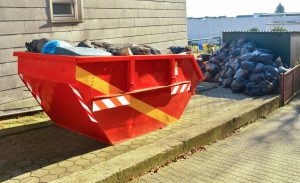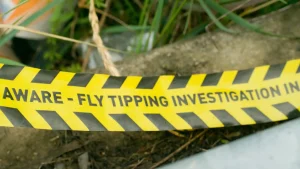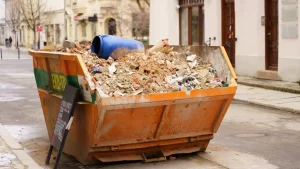When it comes to managing waste, whether it’s for a home renovation project or a major clean-up, hiring a skip is an indispensable solution. But, the real challenge lies not just in choosing to hire a skip, but in knowing how to fill it efficiently.
An effectively packed skip saves both space and money, allowing you to dispose of a greater volume of waste without incurring extra costs. In this article, we’ll explore essential tips and strategies for maximising your skip’s potential.
Understanding the art of skip-filling can seem daunting at first, but with a few expert guidelines, you’ll soon become a pro. We’ll cover everything from selecting the right skip size to safety measures, ensuring your waste disposal process is as smooth and efficient as possible.
Understanding Skip Sizes and Types
Choosing the right skip size is crucial to waste management efficiency. Skips come in a variety of sizes, typically measured in cubic yards, ranging from mini skips for small domestic jobs to large builders’ skips for substantial projects.
It’s important to assess the amount of waste you expect to generate before making a choice. Overestimating can lead to paying for unused space, while underestimating could result in needing an additional skip.
In addition to size, skips also vary in type. Closed skips offer security and are ideal for confidential waste, while open skips are more accessible for bulkier items. Some projects might benefit from a drop door skip, making it easier to load heavy or awkward items.
Consider the nature of your waste alongside the volume when selecting the type of skip that best suits your needs.
Preparing for Skip Arrival
Before your skip arrives, it’s essential to plan where it will be placed. The location should be accessible for the delivery truck and convenient for you to load. It’s also important to ensure the surface is firm and level to prevent any potential tipping.
If you’re placing the skip on your property, such as a driveway, make sure there’s sufficient space and that it won’t obstruct access.
If you’re considering placing the skip on a public road, be aware that this may require a permit from your local council.
These permits have associated costs and can take time to arrange, so factor this into your planning. Also, be mindful of not obstructing traffic or pedestrians and ensure the skip is visible to avoid any accidents.
Strategies for Efficient Filling
Efficiently filling a skip is akin to a strategic game – it’s all about making the best use of available space. Start by loading flat items at the bottom.
This could include materials like plywood or flat metal pieces. These create a stable base and prevent smaller items from falling to the bottom where they might waste space.
Next, add heavier, bulkier items. Breaking down furniture or other large objects can make them easier to stack, reducing gaps and voids.
Be mindful of how you distribute the weight – an unevenly loaded skip can be hazardous to transport. Regularly stepping back to assess the space can help you identify where to place the next item for maximum efficiency.
What Can and Can’t Go in Your Skip
Knowing what can and cannot be disposed of in a skip is essential for legal and environmental reasons. General waste, such as household and garden waste, wood, metal, and most building materials, is typically acceptable.
However, certain items are prohibited, including hazardous waste like asbestos, batteries, electrical appliances, tyres, and medical waste. These require specialised disposal methods.
If you’re unsure about a particular item, it’s best to consult with your skip hire company.
Disposing of prohibited items in a skip can result in additional charges or fines. It’s important to play it safe and adhere to regulations, ensuring that your waste disposal process is not only efficient but also responsible.
Safety Considerations
Safety is paramount when filling a skip. Always wear appropriate protective gear like gloves and sturdy footwear, especially when handling sharp or heavy objects.
Be cautious not to overfill your skip; waste should not extend beyond the height of its sides. Overfilled skips are not just unsafe – they’re also illegal to transport.
Also, be mindful of your physical limits. Lifting heavy items incorrectly can lead to injury.
Use safe lifting techniques, and don’t hesitate to seek help for particularly heavy or unwieldy items. It’s better to take your time and fill the skip safely than to risk injury or damage in the process.
Maximising Space
To truly maximise the space in your skip, it pays to be a bit creative. For instance, hollow items like buckets or tubs can be filled with smaller debris before being placed in the skip.
This not only saves space but also helps to keep the skip tidy and compact.
Another useful tip is to sort your waste as you load. Keeping similar items together can make it easier to stack and arrange them efficiently. For example, stacking bricks or tiles together can save a significant amount of space compared to mixing them with other types of waste.
Remember, the more efficiently you fill the skip, the more cost-effective your waste removal becomes.
Conclusion
Filling a skip efficiently is both an art and a science. By following these guidelines, you can ensure that your skip hire experience is as cost-effective and environmentally friendly as possible.
Remember, choosing the right skip, preparing adequately, loading strategically, and adhering to safety and legal guidelines are all key to a successful waste management strategy.
With a bit of planning and care, you can make the most of your skip and streamline your waste disposal process.
Get in touch with us today to arrange your skip for hire.








